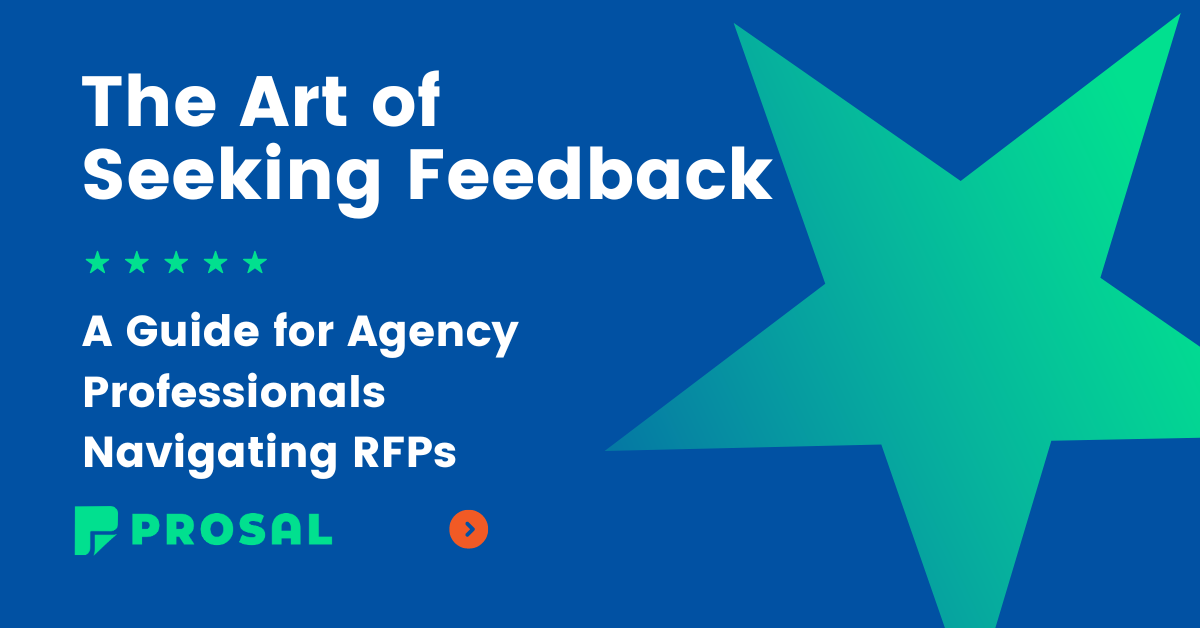Resources
The Art of Seeking Feedback: A Guide for Agency Professionals Navigating RFPs
by
Alfredo Ramirez
Sep 21, 2023

Master the art of RFP feedback for B2B and agency success. Discover strategies for soliciting insights & implementing them effectively. Elevate your RFP game now.
In the agency world, where competition is fierce, and the stakes are high, the Request for Proposal (RFP) process can be a game-changer. For consultants, agency owners, and business development professionals, RFPs present a golden opportunity to showcase their expertise and win lucrative contracts. But what happens when you don't win? Or even when you do? The answer lies in one word: feedback.
Whether you've secured a contract or faced rejection, seeking feedback is essential in improving your performance. Valuable feedback provides insights into areas of improvement, helping you refine your offerings and approach. By doing this, you can continuously improve and offer better products or services to your clients.
Moreover, seeking feedback demonstrates your genuine interest in understanding and meeting the client's needs, fostering trust and rapport. This can build long-lasting relationships with your clients and help you stand out from your competitors. Understanding why you weren't selected or what made you stand out can give you a competitive advantage in future RFPs, leading to greater success in your business endeavors.
Getting valuable feedback is essential to improve performance, but it can be challenging to obtain. Here are some strategies to increase your chances.
Consider these effective feedback requests from our team. George Woodard, Founder of eLsqrd Media Group, shared this on our first webinar on how to win RFPs, claiming it gets over a 50% response rate.
Hey {{POC-NAME}},
I’m grateful to have participated in the RFP process for {{BIZ-NAME}}. I trust that the success I’ve seen so far will continue. I recognize your requirements are best met with another vendor, but I am thankful to have learned more about your organization.
I look forward to hearing more in the future about the accomplishments of your organization. Also, I am grateful for being considered as part of the call for proposals.
As someone constantly looking for growth opportunities, is there any specific feedback you can provide about why I wasn’t selected? Every bit helps in this journey.
Again, I appreciate the consideration and time, and I hope whoever you select knocks it out of the park!
All the best,
{Your Name}
His overt gratitude pours through the text and makes one feel almost compelled to reply, and it works for George!
Alfredo from Prosal and ALRAS Digital has also used this shorter version for his feedback:
Hi NAME,
Thank you for sharing this update (something that’s not done enough in the world of RFPs, so kudos). I wanted to follow up with a quick question, if you’re able to answer it: Who did you pick for this project, and what stood out from their proposal that led you to choose them?
I look forward to hearing back.
Best,
In his outreach, Alfredo frames the question differently, asking the POC not what he could have done better but what stood out from everyone else. Although it’s not directly related to his proposal, Alfredo uses it to get inside the decision-making mindset of the reader and better understand the reasoning behind the decision to select someone else
It's essential to analyze feedback received thoroughly. Consider the core message of the feedback carefully, as it can provide valuable insights into improving your proposals, presentations, or offerings. Incorporate necessary changes into your work with care and attention to detail. Finally, follow up with the POC to show that you value their input and to potentially open the door for future opportunities.
In a world where you’re your own boss or you're in charge of bringing in new business, feedback is the compass that guides success. By actively seeking, valuing, and implementing feedback, consultants and agency owners can improve their chances of winning RFPs and build lasting relationships with potential clients. Remember, every piece of feedback is a stepping stone to your next big win. Embrace it!